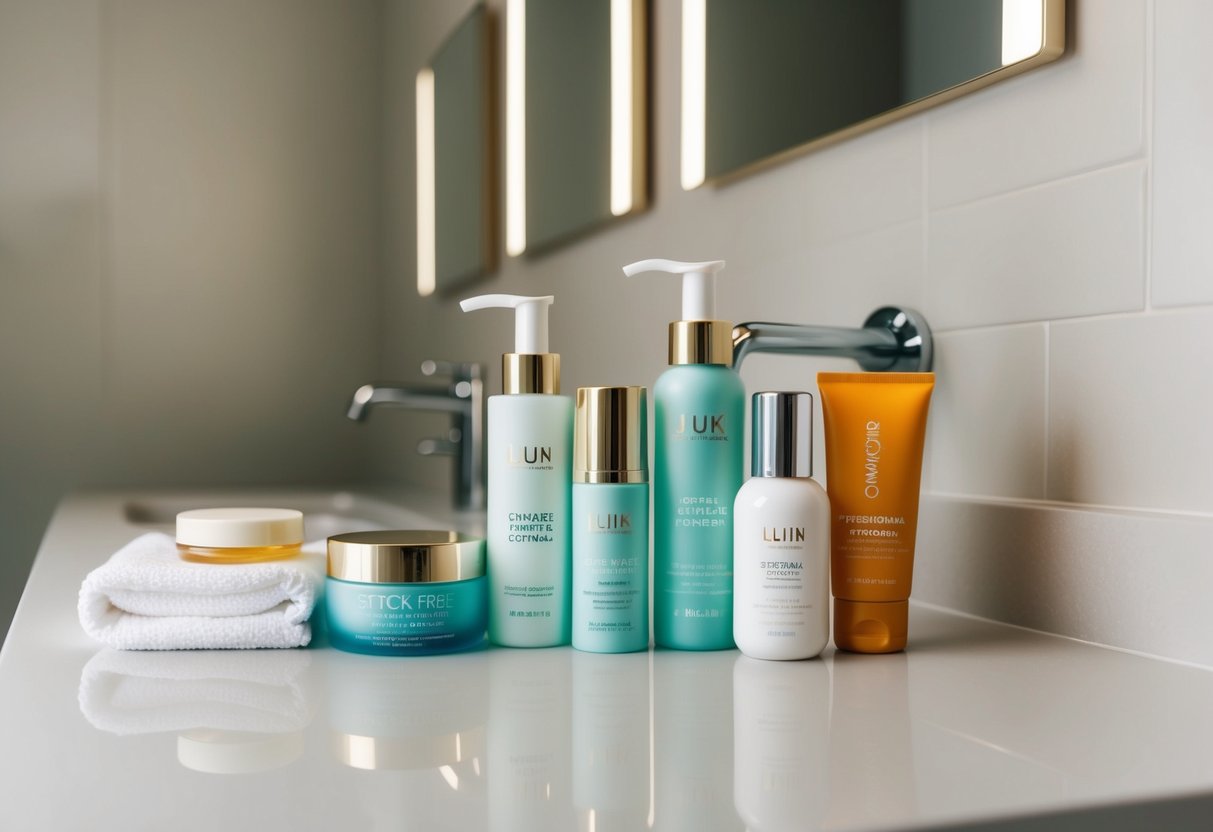Building Your Capsule Skincare Routine: Must-Have Basics for Radiant Skin
Hydration: Maintaining Skin Moisture Balance
Hydration ensures that skin stays supple and maintains its elasticity. It is essential for preventing dryness and irritation, making it a critical step in any skincare routine. Incorporating products with hydrating ingredients like hyaluronic acid or glycerin can assist in drawing moisture into the skin, ensuring it remains plump and hydrated.
Using a hydrating serum immediately after cleansing can significantly enhance moisture retention, especially for those with dry skin. Selecting products that promote hydration is important for keeping the skin barrier strong, which serves to defend against environmental stressors. Consistently hydrated skin appears healthier, with an improved texture and tone.
Moisturizing: Locking in Hydration
Moisturizing is vital for sealing in hydration and providing a protective barrier on the skin. It not only helps in retaining moisture but also offers essential nutrients. Choosing a moisturizer based on skin type is key to its effectiveness. Those with oily skin might prefer a lightweight, non-comedogenic formula, whereas individuals with dry skin often benefit from richer creams.
Using a moisturizer morning and night is advised for consistent results. Ingredients like ceramides, shea butter, or natural oils are excellent for providing nourishment while keeping the skin balanced. Moisturizers act as a shield, preventing the loss of water and enhancing the skin’s overall resilience.
Sun Protection: Guarding Against Sun Damage
Sun protection is indispensable for preserving skin health and preventing premature aging. Daily application of sunscreen with a minimum SPF of 30 can protect against harmful UV rays. It’s crucial to select a broad-spectrum sunscreen, which defends against both UVA and UVB rays, ensuring comprehensive coverage.
Applying sunscreen should be a year-round practice, regardless of weather conditions. Reapplication every two hours is necessary, especially during prolonged sun exposure. Sunscreen can be found in various forms, such as lotions, sprays, or sticks, offering flexibility for every preference. Incorporating sun protection into a daily routine helps reduce the risk of skin cancers and keeps skin looking fresher and more youthful over time.
The Significance of Exfoliation

Exfoliation plays a crucial role in maintaining clear and radiant skin. It helps remove dead skin cells from the surface, allowing for smoother texture and more effective absorption of skincare products. This process also aids in unclogging pores, reducing the risk of acne and enhancing the natural glow of the skin.
Choosing the Right Exfoliant
Selecting an appropriate exfoliant is essential for achieving optimal results. Exfoliants come in two main types: physical and chemical. Physical exfoliants include scrubs with fine particles or brushes that mechanically slough off dead skin. They work well for those with oily or non-sensitive skin but should be used gently to prevent irritation.
Chemical exfoliants, such as alpha hydroxy acids (AHAs) and beta hydroxy acids (BHAs), dissolve the bonds holding dead skin cells together. AHAs are ideal for dry or sun-damaged skin due to their hydrating properties, while BHAs penetrate deeper and are beneficial for acne-prone or oily skin by cleaning out pores. Each type of exfoliant offers distinct benefits, so the choice should align with individual skin types and concerns.
Frequency and Method of Exfoliation
The frequency and method of exfoliation depend on skin type and tolerance. For most people, exfoliating once or twice a week is sufficient. Over-exfoliating can lead to irritation and damage, reducing moisture levels and causing redness or sensitivity. Those with sensitive skin should use caution and might benefit from exfoliating less frequently.
It’s crucial to apply the exfoliant gently, whether using physical or chemical methods. Physical exfoliants should be massaged onto damp skin in circular motions without excessive pressure. Chemical exfoliants can be applied directly after cleansing, ensuring even coverage. Consistent and appropriate exfoliation can help maintain smooth, glowing skin while minimizing pore congestion and promoting the efficacy of other skincare products.



